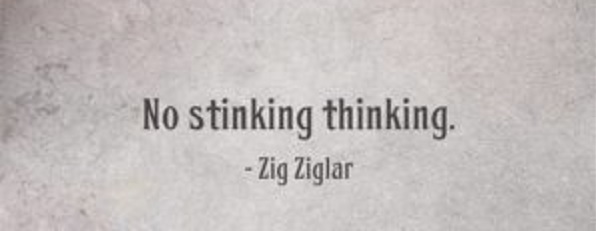
By definition the term Leadership implies that one has followers, but in real life how does one obtain followers? Often individuals are in positions where the job description states very explicitly they will have authority over the activities, schedules, performance, etc., etc., of others. This is a big responsibility but does being in a position of authority make you a leader? If not, does authority require leadership? Conversely, does leadership require authority?
Is leadership essential for positions of authority, or is it just a human trait that would be nice if available? If a person in authority - aka ‘boss’ - does not have to be a leader, then should we say that leadership is not a prerequisite for being a boss? If not, then if the boss doesn’t formally lead then who does? In my experience, I have found that often the greatest leaders in an organization are not individuals who are in positions of authority but nevertheless have followers and influence the organizational team and culture in very significant ways whereupon often the implementation and execution of organizational goals and objectives are directly determined by them - our informal leaders. Some examples of leaders without formal title and authority were Gandhi, Martin Luther King, Nelson Mandela and Joan of Arc to name a few.
I have found that it is optimal if bosses are also leaders, but unfortunately the former does not always entail the latter. Often an organization has people in positions of formal authority and responsibility who are not leaders and consequently have very little influence and leverage over team productivity and goal execution but yet have all the responsibility. Although it must be noted that frequently when a boss is not a leader it is due to no fault of his or her own. Maybe they are new to the organization or possibly young and lack experience, maybe a bad hire and put in the wrong position or maybe they are experts in a vital area but truly possess little ability in areas of communication and or interaction with people. There can be numerous reasons why a boss is not a leader.
These formal bosses may make decisions and create and finalize numerous policies, but still are not able to actually achieve progress towards the organization’s goals and objectives because they have few if any followers. Often, they will experience frustration and or anger and may be tempted to implement and execute policy and protocols with force, fear and intimidation to make up for their shortfall in leadership. Unfortunately, this usually has a disastrous affect, fostering anger, resentment, resistance and or anxiety and paralysis. Ultimately the results show up on the P&L in the form of higher labor cost caused by excessive turnover, unwarranted overtime and lower revenue caused by poor patient experience and lower quality of care i.e., angry or afraid staff just are not capable of giving compassionate, attentive, high quality care.
I have found there are two essential ingredients necessary for genuine leadership; respect and like.
Respect means people believe you know where you are going and you know how to get there. Like means they believe you care about them and that you want them to succeed and enjoy the journey. If they respect you but do not like you then they will follow you but they will not stay with you. If they like you but do not respect you then they will stay with you but they will not follow you. To be a true leader and to achieve real success you must have both; competency and compassion, intelligence and heart, respect and like. This will result in followers who voluntarily follow and stay with you long enough to accomplish something meaningful.
There are three key questions then presented:
- How do we assure that people in positions of formal authority and responsibility become true leaders?
- How do we assure organizational success during their leadership educational journey?
- How do we assure utilization of people not in positions of authority and responsibility but who are genuine leaders?
First, to accomplish the aforementioned, we as senior leaders must create through our actions and our hiring process a culture of caring and respect. Simply said, “The Golden Rule must be part of our key criteria for hiring, it should be emphasized in orientation and clearly and strongly stated in our code of conduct and be the center of our continuing education. But most importantly it must be ‘shown’ in our daily walk and talk, emphasized in our interaction with direct reports and leaders of tomorrow and exemplified in our decision making and prioritization of goals and objectives.
Second, we must truly believe that our staff are assets and not liabilities and invest our time, effort and resources accordingly. Everything we want to achieve in healthcare involves people. Nothing can get done successfully without them. If we want competent leaders, then we must invest in them as such. We must invest on a continuous basis in their education and training and mentoring and coaching if we expect them to develop the competency required for leadership. Wisdom and prudence demands that we do this so that our most valuable assets – our staff – are leading with up to date knowledge, skills and know-how rather than being ill equipped for the future and getting left behind.
Third, we must create a culture of inclusion which means everyone is part of the same big team. Our culture and belief system must entail the core belief that everyone has equal intrinsic value as human beings i.e, different roles with different responsibilities but all of equal value. This would then be exhibited in our team dynamics where every person in authority, every boss, would value and listen to input and not only allow feedback on ideas and decisions but highly encourage it from everyone. A culture that recruits, hires and trains its individuals of authority to listen and serve rather than direct and dictate i.e, humility. Individuals who intimately understand they do not know everything and are not expected to know everything and have true humility, will identify, value and listen to their informal leaders and use them as champions in a positive way for the betterment of the team, patients, community and organization.
An organization that creates a culture of leadership that exemplifies the Golden Rule; cares for and respects all staff; sees staff as assets and invests in them accordingly; values all individuals equally; is inclusive and listens; and where humility is an expectation of all positions of authority will best be able to assure there is consistent genuine leadership which has followers who both Trust and Like them, because they exhibit Competency and Compassion, Treat their staff as Assets and utilize both Formal and Informal leaders consistently for the good of all.
Connect with us on LinkedIn, join our Active Network Program and look at the other areas of connection we offer.






















